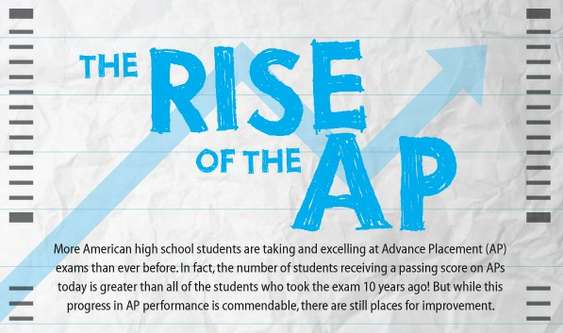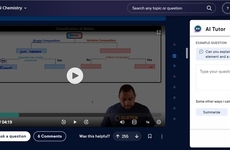
The 'Rise of the AP' is Smarter Than Ever
Jennifer Gosnell — May 29, 2012 — Social Good
References: teach & infographicsite
When advanced placement courses can mean the difference between college and university, the 'Rise of the AP' infograph is an important tool for American students. Although, as the graph indicates, whether or not the AP is important isn't in question, it's how students are faring from it.
Since 2001, the number of AP scorers recieving over a three (on a scale of one to five) in AP classes has dropped nearly 10%. The scale of who takes the exams is also disproportionate, with 66% of female takers in comparison to only 34% males. The ethnic divide is also taken into account. With Asian-Americans and White Graduates receiving the bulk of the highest marks, the system is facing some challenges to overcome.
Overall, however, more students are taking AP classes, which bodes well for their academic future and long-term successes.
Since 2001, the number of AP scorers recieving over a three (on a scale of one to five) in AP classes has dropped nearly 10%. The scale of who takes the exams is also disproportionate, with 66% of female takers in comparison to only 34% males. The ethnic divide is also taken into account. With Asian-Americans and White Graduates receiving the bulk of the highest marks, the system is facing some challenges to overcome.
Overall, however, more students are taking AP classes, which bodes well for their academic future and long-term successes.
Trend Themes
1. Rise of AP Infographics - Infographics that analyze the AP program and its impact on students reveal insights on opportunities to improve the program.
2. Drop in AP Scores - The downward trend of AP scores signals an opportunity for innovation in modifying the course materials, teaching methods, and grading system.
3. Diversity in AP Test-takers - The underrepresentation of certain groups in AP classes and tests calls for more inclusive and accessible education, which can be achieved through innovative teaching and outreach strategies.
Industry Implications
1. Education Technology - By harnessing data analytics and artificial intelligence, education technology can personalize AP learning and boost student performance.
2. Diversity and Inclusion Training - Companies and organizations can take advantage of the diversity trends in AP classes as an opportunity to offer diversity and inclusion training to their employees.
3. K-12 Education Policy - Policy makers and educators can use the insights from the rise of AP classes and the diversity of test-takers to improve K-12 education policy and funding to meet students' needs.
4
Score
Popularity
Activity
Freshness
























